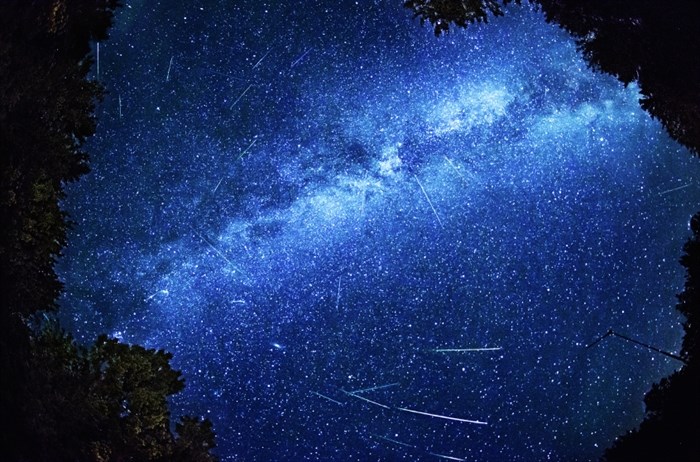
Image Credit: istockphoto.com
October 08, 2024 - 7:00 PM
A meteor shower is active in the night sky over Kamloops and the Okanagan this week, and unlike most meteor showers this one can be viewed before bedtime.
The annual Draconids meteor shower can be seen when Earth moves through the debris trail of the 21P/Giacobini-Zinner comet, according to NASA, and are active until Oct. 10.
The comet does one rotation around the sun every 6.6 years and on the year of its closest approach more of it comes apart which increases the size of its tail and the number of visible meteors.
The last big show was in October, 2018 and 2025 will be the next year in the cycle with extra activity.
The meteor shower reached its peak Tuesday with roughly 10 meteors visible per hour, and will be active for the next two nights. While it isn’t the biggest display of fireballs compared to other meteor showers, the Draconids meteor shower can be viewed right after the sun sets.
Draconids appear to radiate out of the constellation of Draco the dragon.
There is a 30% chance of rain in the forecast for Kamloops and the Okanagan Tuesday night with the clear overnight skies predicted for Wednesday night.
Meanwhile, another meteor shower is expected later this month.
The Orionids meteor shower will reach its peak on Oct. 20 and 21 and is considered by NASA to be one of the most beautiful meteor showers of the year with roughly 23 meteors visible every hour.
Known for their brightness and high speeds, the Orionids are active between Sept. 26 and Nov. 22 every year and can be viewed during the hours after midnight.
The fast meteors can streaks of glowing light behind them and sometimes become fireballs.
Orionids can be seen when Earth passes through space debris left behind comet 1P/Halley. Comet Halley takes about 76 years to orbit the Sun once and the last time it was seen was in 1986. It won't enter the inner solar system again until 2061.
The Orionids appear to radiate from the constellation Orion.
If you get a good photo of the meteor showers this month and want to share, send it news@infonews.ca.
To contact a reporter for this story, email Shannon Ainslie or call 250-819-6089 or email the editor. You can also submit photos, videos or news tips to the newsroom and be entered to win a monthly prize draw.
We welcome your comments and opinions on our stories but play nice. We won't censor or delete comments unless they contain off-topic statements or links, unnecessary vulgarity, false facts, spam or obviously fake profiles. If you have any concerns about what you see in comments, email the editor in the link above. SUBSCRIBE to our awesome newsletter here.
News from © iNFOnews, 2024